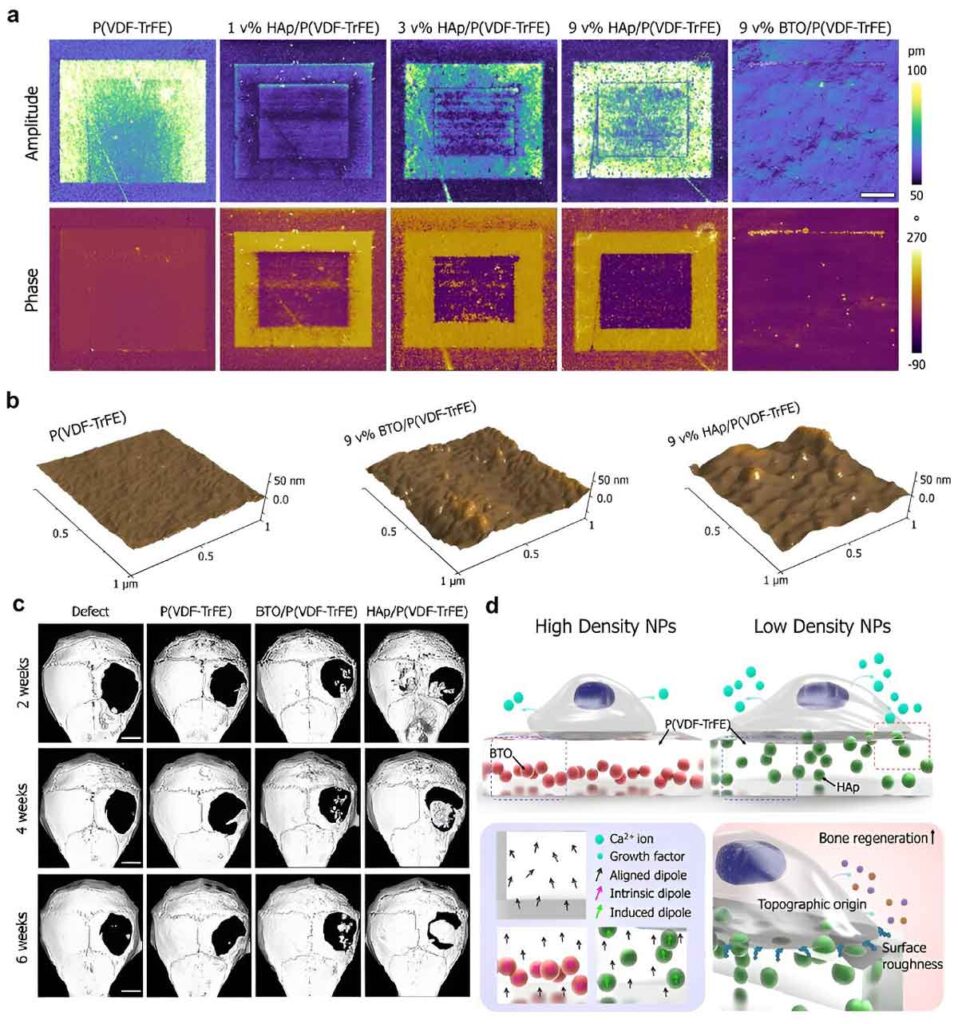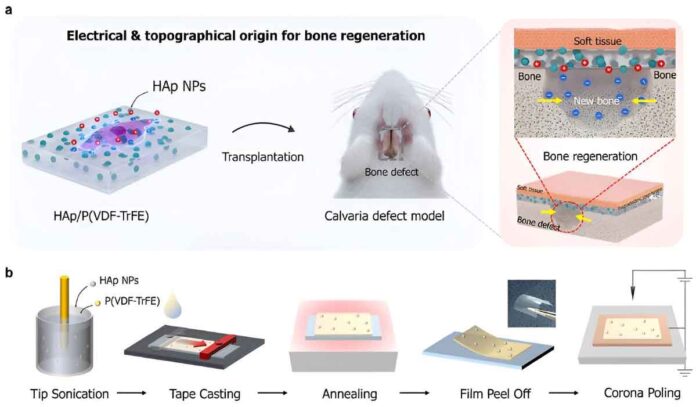In a breakthrough discovery, a team of researchers at KAIST, led by Professor Seungbum Hong, has unveiled a groundbreaking method for bone regeneration.
Traditional approaches like transplants and growth factor transmissions have been hampered by high costs, prompting the need for innovative solutions.
A Game-Changing Scaffold
Utilizing the unique properties of hydroxyapatite (HAp), a biomimetic scaffold has been engineered.
This scaffold generates electrical signals upon pressure application, mimicking the natural osteogenic abilities of bone tissue.
Hydroxyapatite, commonly found in bones and teeth, serves as the cornerstone of this pioneering material.
A Collaborative Endeavor
This remarkable achievement was realized through collaboration with Professor Jangho Kim’s team from Chonnam National University.
Published in ACS Applied Materials & Interfaces, their findings mark a significant advancement in the field of bone regeneration.
Unveiling the Mechanism
By fusing HAp with a polymer film, the research team developed a flexible scaffold with promising potential for bone regeneration.
Through meticulous analysis using atomic force microscopy (AFM), the electrical and surface properties crucial for cellular response were unveiled.

Unlocking Potential
The scaffold’s ability to mimic the bone tissue environment was demonstrated through in-vitro and in-vivo experiments on rats, showcasing its efficacy in promoting bone regeneration.
Profound insights into the principles of bone regeneration were gained, shedding light on the interplay between piezoelectricity and surface properties.
Professor Hong’s Insight
Professor Seungbum Hong expressed enthusiasm about their findings, stating, “We have developed a HAp-based piezoelectric composite material that can act like a ‘bone bandage,’ accelerating bone regeneration.”
Emphasizing the significance of their research, he highlighted the exploration of piezoelectricity and surface properties in enhancing bone regeneration.
Revolutionizing Bone Healing
This groundbreaking research not only introduces a novel approach to biomaterial design but also holds promise for revolutionizing bone healing techniques.
With further advancements, this piezoelectric material could offer a cost-effective and efficient solution for bone regeneration, transforming the landscape of regenerative medicine.
FAQ
The piezoelectric scaffold generates electrical signals upon pressure application, mimicking the natural environment of bone tissue. This stimulation aids in accelerating bone regeneration processes.
Yes, the scaffold is made from hydroxyapatite (HAp), a biocompatible material commonly found in bones and teeth. This ensures compatibility with the body’s natural processes.

